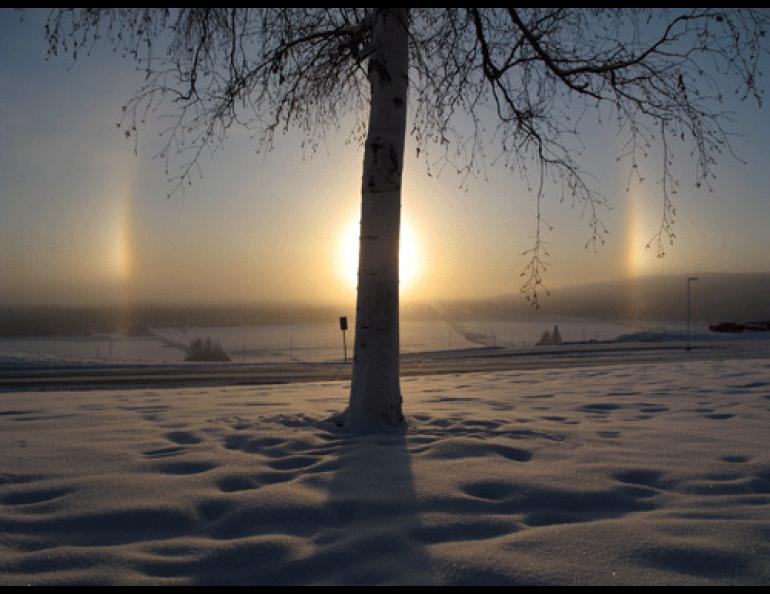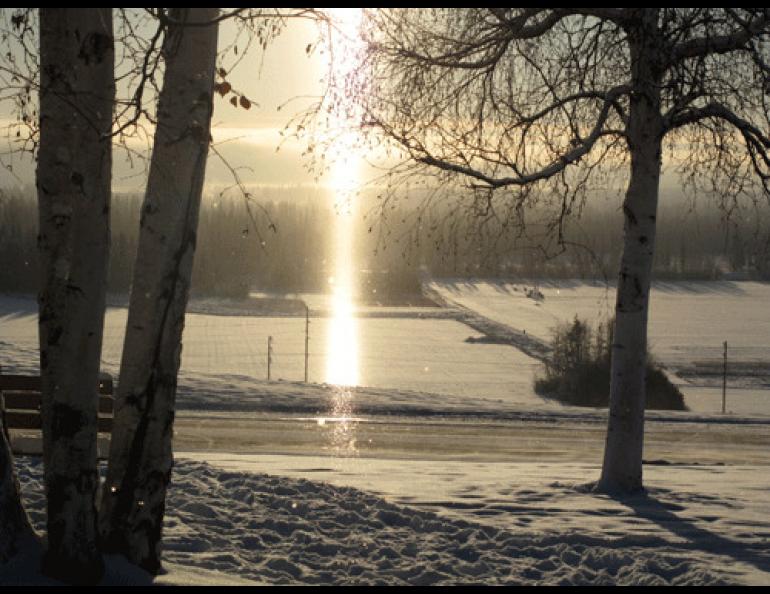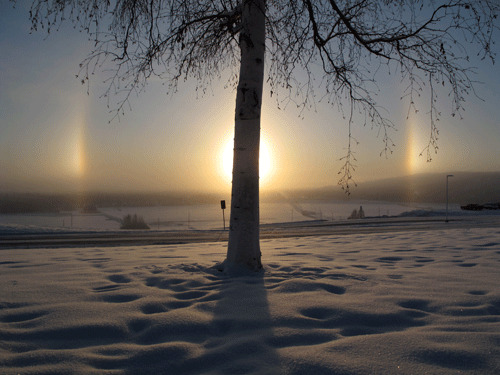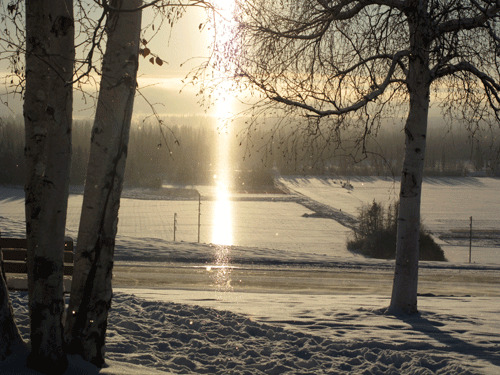

Diamond dust dazzles on dog days
Here we go again. Early this week, a friend at the National Weather Service pointed to a swath of sub-zero temperatures across a map of northern Alaska. The low temperatures were anchored by minus 27 degrees Fahrenheit at the always-frigid Chandalar Lake weather station.
But, just as we begin to wince from the cold, we experience one of the best light shows of late fall and early winter. Fairy dust wafting down from the sky turns the passing ravens into Tinkerbells as they fly through glittering shafts of light. The sun, sitting low on the horizon, seems to be wearing a white Mohawk as rainbow shields hang in the air on either side. The mystical parentheses are pointed to by kids in cars and admired by people looking out south-facing windows.
These phenomena, caused by fine ice particles called diamond dust, have been detailed in print many times before. You can find them represented as colored-pencil illustrations in books produced by the first polar explorers, who savored the bit of dazzle in their black and white worlds.
A few modern-day scientists appreciate these pillars of light and “sundogs,” too. Ken Sassen can answer the phone in the middle of the day and — without reaching for a book — explain the theory behind both. Sassen is an atmospheric scientist with a south-facing office on the University of Alaska Fairbanks campus, where he works for the Geophysical Institute.
“I’m looking out the window and people are stopping and looking up like they see flying saucers,” Sassen says. He then offers an explanation for the displays.
“Ice crystals are forming because it’s so (darn) cold out there,” Sassen says.
Air temperatures around zero degrees Fahrenheit encourage the formation of plate-like ice crystals that can reflect light in spectacular ways.
“They’re perfect little hexagons that fall with their large, flat faces aligned with the ground,” Sassen says.
Those tiny wafers of ice waft downward, reflecting sunlight from their flat sides and create columns of light that extend from the sun to the ground. The crystals are also responsible for the rainbows bracketing the sun.
“Twenty-two degrees from the sun are sundogs,” Sassen says. “The two colored bands are there because light gets refracted.”
The ice crystals bend sunlight like a glass prism, with hot reds appearing closest to the sun and cool blues farthest out. No one seems to know where the term “sundogs” came from, but on this mid-November afternoon the beams bracketing the sun look like long tails wagging almost to ground level.
As the sun sets earlier and earlier, people may notice another phenomena: spotlight beams extending toward the heavens from car headlights and streetlights. Again, the cause of this light show is falling ice crystals, which reflect both artificial light and moonlight, just as they did sunlight.
With the deepening cold and the inevitable sub-zero temperatures, we are in for a long winter. But, for now, we have hit the meteorological lottery. We are rich with diamond dust, and the pleasant distraction provided by low angle sun, frigid air, and a sunny day.
“Today, we got it all together,” Sassen says.
Video: A pillar of light shines downward from the sun because of falling ice crystals: http://www.youtube.com/watch?v=d4YSJIpczXU
Video by Ned Rozell






